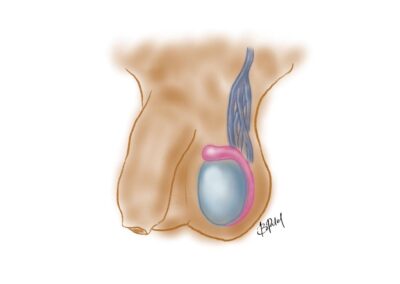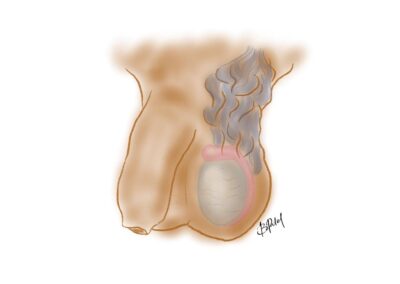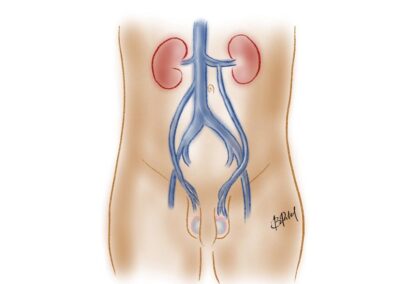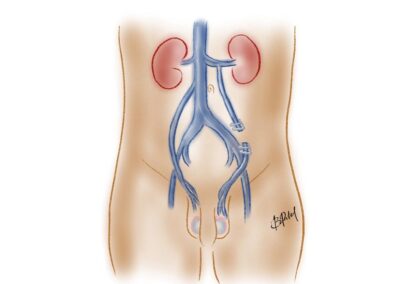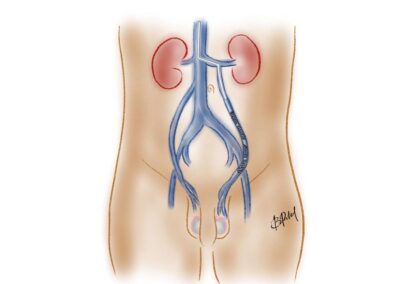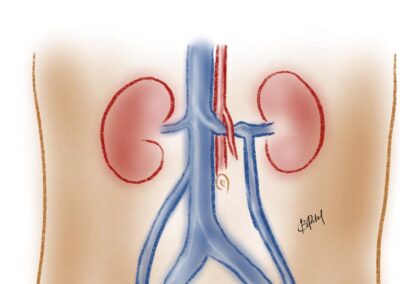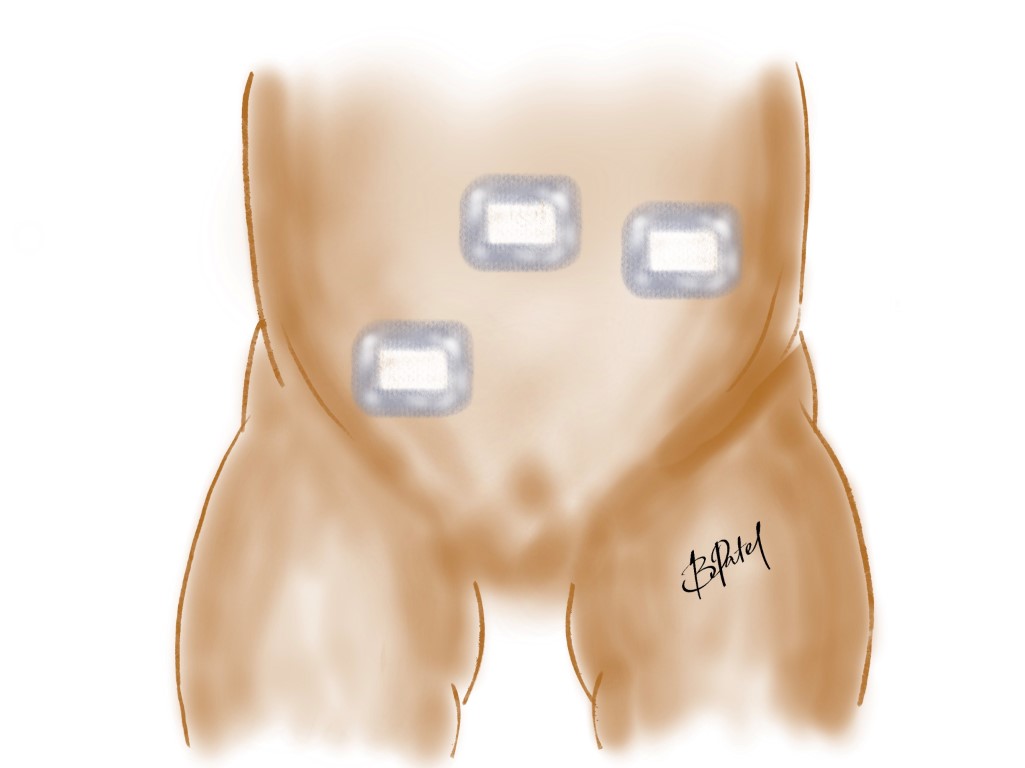Varicocele
A varicocele is a condition where the veins in the scrotum enlarge, giving the feeling and appearance of a “bag of worms”. It can sometimes cause pain, and is easily treated.
The Condition
What is a varicocele
A varicocele occurs when the veins that drain the testes enlarge, resulting in delayed drainage. This gives the appearance of a “bag of worms”, and mainly affects the left side of the scrotum. Think of it as being similar to varicose veins in the legs.
Why does it occur?
The veins of the left testicle drains differently to the right, so it has a higher pressure to drain. With increased pressure, it can get to the point of enlarging as it doesn’t drain as effectively.
Does it need repair?
Not always. If it causes pain, then it can be treated.
There is some thought about adults and an association with fertility issues, but it is not definite.
Is it dangerous?
No
Treatment
Surgical Repair
How long does the operation take?
The operation takes about 15-20 minutes.
The anaesthetic can take about the same time before and after, so you’ll be away from your child for an hour or so, until they are ready for you in the recovery room. You will be notified when they are ready for you to see them in recovery.
How do I choose?
Talk to your surgeon about the options. It can be difficult to choose, and really depends how problematic it is.
What are the risks of the operation?
The anaesthetic – airway and breathing issues are extremely rare.
Laparoscopic approach
- Recurrence
- Injury to internal abdominal / scrotal structures
- Infection / bleeding / bruising of the wounds in the abdomen
- Hydrocele – 15%. This is a swelling of the scrotum, and may require another operation.
Interventional radiology embolisation
- Wound issues – usually minor
- Recurrence
- Pain – usually settles
- Coil displacement
Recovery
What happens after the operation?
Recovery – you will be called into the recovery room just after they are awake.
Feeding – They can feed when hungry
Home – usually after an hour or 2, once the nursing team have ensured your child is safe and comfortable
The wound / dressings
Do they need pain relief?
Your child will receive good pain relief in the operating room, that will last a few hours.
After the operation they will need paracetamol and possibly ibuprofen (eg. Nurofen) for a few days. Please let your surgeon and anaesthetist know if your child has intolerances or allergies.
In order to avoid medication, aim to distract your child and keep their mind off the area. Reading, writing, playing board games and other engaging activities help.
Normal activity
Bath / shower – the day after the operation
Swimming – 1 week
Daycare / School – 5-7 days
Sports – 2-3 weeks
Troubleshooting
Pain
It is uncommon for significant pain that is not controlled with simple pain killers like paracetamol and nurofen. Call your surgeon or the day unit for further advice.
Is there a wound infection?
Infections can develop around 2-4 days after the operation, and is a fairly uncommon issue.
The wound may be infected if there is increasing redness around the wound and tenderness. This may be associated with discharge from the wound site.
You will need to see your family doctor or call your surgeon for further advice.
It is very swollen - has it recurred?
It does become swollen after the operation, usually for a few days.
If your child has increasing pain, tenderness and vomiting associated with a similar bulge to before the operation there may be recurrence. If your child is unwell, you may need to go to the emergency department. Call your surgeon and let them know.
Otherwise see your GP and call your surgeon so your child can be assessed.
What do I look for?
You know your child best. If you have any concerns please see your family doctor or call your surgeon. The list below are issues that require medical attention.
- Increasing pain or persisting pain despite pain relief
- Increasing swelling or bulge – possible recurrence
- Fever >38.2 degrees Celsius
- Vomiting and feed intolerance
- Discharge or bleeding from the wound
- No bowel motions after 3 days
Experienced Surgeons
Over 25 years experience in paediatric surgery
Locations
Queensland and northern New South Wales
Appointments
Prioritised time for your child
Information
Conditions, procedures and aftercare
In the spirit of reconciliation we acknowledge the Traditional Custodians of country throughout Australia and their connections to land, sea and community. We pay our respect to their Elders past and present and extend that respect to all Aboriginal and Torres Strait Islander peoples.




